Essay by Wendy Townsend
Protecting Animals in a Fallen World
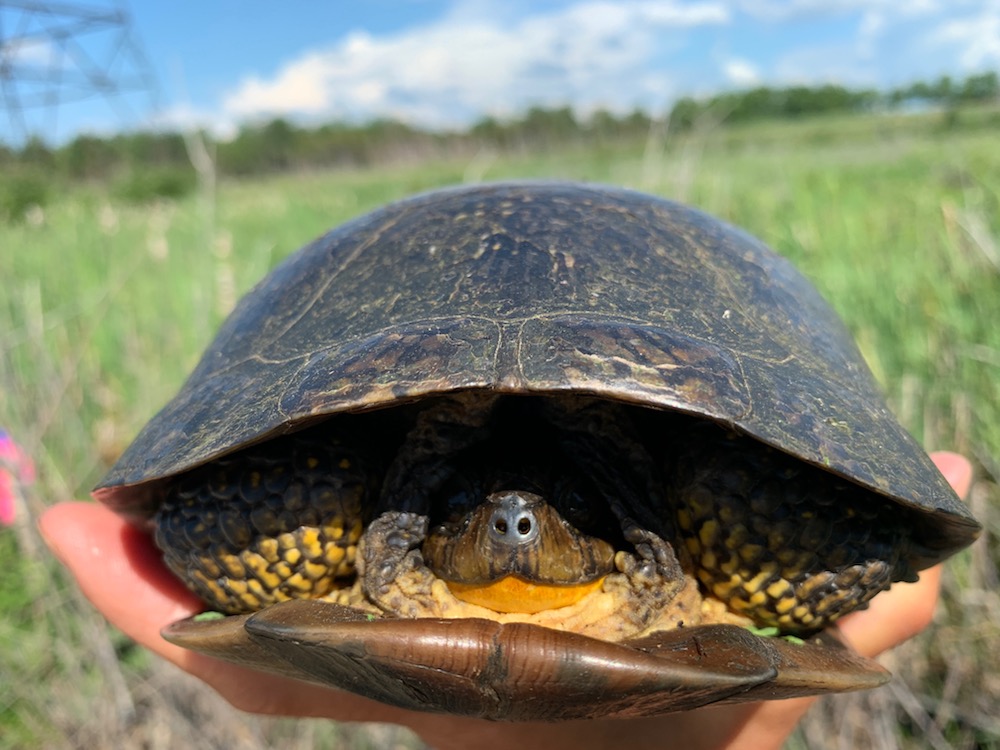
I got to the site early that day, when the springtime birdsong was at its peak. I stood in the dewy grass at the first pool and felt a sense of home, like when I was five years old by the pond with my bullfrog, wanting to bring him uphill to my aunt Marcia’s wedding party.
There were no turtles in the pool, but I saw movement and squatted for a closer look into an underwater world: The tadpoles of wood frogs and spring peepers wriggled and drifted through the network of crisscrossing weed stems with clusters of toad eggs clinging loosely; a dragonfly nymph crawled up one stem, probably hunting mosquito larvae that wriggled near the water’s surface; and caddisfly larvae in their protective silk and debris cases crawled up and down the weed stems scraping algae to eat. At least two species of water beetle lived here, one called “water boatman,” because he looks like a man in a rowboat with oars.
I’ve had work during the pandemic, since utilities are essential. When gas or electric work is being done within the habitat of threatened turtle or snake species, the law requires a reptile monitor, like me, to be on site. In April 2020, I was monitoring a section of power lines that went through wetland for threatened Blanding’s turtles. Industrial synthetic matting had been put down on the right-of-way for heavy trucks and equipment, to come in and do the work. But four of the poles had pools of water around them, so they were bringing in extra mats, the heavy wooden kind, to put down on the pools to support the extending legs of a bucket truck. Before the mats could go down, I was to check these pools for Blanding’s turtles.
I heard the truck coming and stood up. The truck was a giant, roaring machine attached to a flatbed stacked with the wooden mats like huge pallets. I watched it turn and drive through the open gate and onto the right-of-way. The diesel engine vibrated in my bones and the earth trembled—I mean that I could see the mud actually moving—and the tadpoles darted here and there in short, straight lines as though panicked. The truck stopped by the pool, its engine rumbling. The driver got out of the cab, walked around the back, climbed into a seat and waited to operate an iron claw on a cable.
Even if I had my net and bucket, I couldn’t get the tadpoles out of the crisscrossing network of plant stems. Since no Blanding’s turtles were present, I had to give the okay. The claw picked up a mat by a chain wrapped around the middle planks and lifted it off the pile. Up in the air tilting, balancing, the claw swung the huge mat over the pool and dropped it, sending muddy water up in the air and rolling back into the wetland, bending the cattails, collapsing and tearing apart spider webs between their stalks.
• • •
Every day the unnoticed lives of countless animals are cut short by our activities and there’s nothing I can do about it. That’s my adult, matter-of-fact tone I use when I have to distance myself from grief that’s too much to carry. But the grief has to go somewhere. Since I was ten years old, it often manifests in stomach trouble. Sometimes I put my hands there and my face scrunches up because the suffering of the frogs and turtles and snakes and lizards is there, the whole world of it; and I want to go back to being a child, when I believed that protecting animals was something I could do.
The section of wetland I walked, where Blanding’s turtles might still exist, was like a long patch in a quilt with busy roads cutting through at opposite ends, and houses lining both sides. The patch belonged to the power company and up the center was a swath of bushes, like hedgerow the width of a four-lane highway. Migratory songbirds nested there, somehow enough of them surviving predation by house cats. I saw a wild turkey in the bushes, and several thin, nervous deer. Cottontail rabbits seemed to be doing well, though, and skunks and raccoons, which thrive in suburbia.
Between the edges of the power company’s right-of-way and some of the houses grew tall evergreen trees. People who lived in those houses walked out their back doors across green mowed lawns with ornamental shrubs to the evergreen trees and dumped their junk on the other side. Old tires, a broken baby stroller, shoes, upholstered cushions with foam spilling out, unidentifiable parts of appliances or vehicles and other strange plastic things.
On that same April day, I saw a swirl in the water in the fourth pool, the kind a turtle makes ducking under. I plunged my hands down in the mud. I went around the edge of the pool and kept moving my hands through the mud until I began to feel it vibrate from the truck’s engine idling nearby. The driver waited. I stood up and got out of the way and the claw lifted the mat, swung it out over the pool and dropped it, and again, there was nothing more for me to do but keep walking the right-of-way, watching for turtles while the bucket trucks entered the site to do their work.
An opening in the hedgerow led to a patch of sandy soil. There were a few patches like this on the right-of-way, recognized by environmental agencies as nesting habitat for Blanding’s turtles. Painted turtles and snappers also used these patches for nesting, but raccoons and skunks had dug up the turtle eggs and scattered the empty shells that curled into little pointy-tipped white ovals as they dried. ATV and dirt bike tracks crisscrossed the sandy nesting area, too. When I was chatting with the job foreman, he said that because of the pandemic, people not at work were riding ATVs and dirt bikes more than ever, and though it was illegal, utility right-of-ways were favorite places to ride.
I needn’t have worried about the swirl in the fourth pool of water—no Blanding’s turtles could have survived there.
My reptile monitor colleagues had been sending reports from another Blanding’s site where a healthy population of the turtles thrived in a wetland filled with wildlife. So, for a while, I felt happy about this other place where the Blanding’s turtles were safe, until I learned that the beavers and their dams, which sustain the depth of water required for turtle hibernation, were being destroyed because the utility company did not want their new poles standing in water.
There’ve been a lot of days this monitoring season when I’ve been so tired I wanted to go find a place to sit down and put my head in my hands. I’d lost faith in my work as a reptile monitor, and as a writer.
• • •
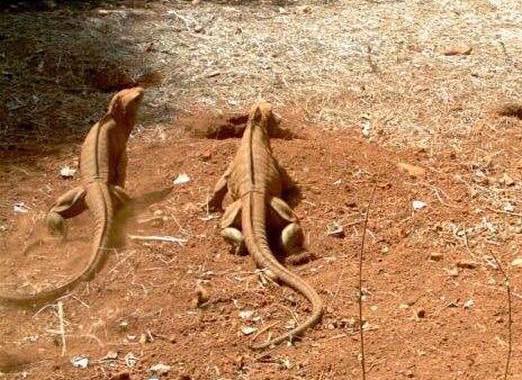
In the summer of 2019, I went to Jamaica to follow iguana biologist Dr. Stesha Pasachnik and write a book about her and the Jamaican iguanas she is working to save. I went in June, during the iguanas’ nesting season when females converge on a few small patches of red earth to dig their nests, and I got to sit behind a blind, very close, and witness this amazing event. It was a dance of dragons, digging and kicking up sprays of the iron-rich red earth, coating each other in red, turning, circling their nest burrow entries, and defending them from other females looking for a place to dig. The urgency and drive to dig nests and lay eggs was so palpable it was as though the iguanas knew how close they’d come to going extinct.
In a powerful commentary article for the International Reptile Conservation Foundation about one of several threats to the Jamaican iguana, Tandora Grant of the San Diego Zoo Institute for Conservation Research, writes, “The Jamaican Iguana (Cyclura collei) has seen a substantial population increase from presumed extinction during 1948–1990 to the present, in one of the world’s most compelling conservation success stories.”
In the late 1800s, “the Jamaican Iguana was particularly hard hit by the introduction of the Small Indian Mongoose... [which ate] iguana eggs and juveniles up to one kilogram in size. Extensive trapping in the core iguana zone has now made survival to adulthood a real possibility for at least some wild hatchlings.”
Grant had the great fortune of joining a team of biologists who ventured into the Hellshire Hills during early efforts to save the iguanas. “I was thrilled,” she writes, “to be able to offer my skills to work with an amazing animal that we all thought had gone the way of the Dodo!”
Controlling the mongoose population, plus the head start program at the Hope Zoo has been key to the iguanas’ recovery. In 2018, Dr. Pasachnik reported, “This year we were able to release a total of 69 [head start] individuals over two releases. In the past only one release has occurred per year and the average released was 30 to 35.”
But the recovery is fragile. Habitat loss is an ongoing threat, yet, ironically, if people dropped off the earth, the iguana would soon become extinct for real, because without ongoing predator management and the head start program, mongooses would devour every single egg and hatchling iguana.
Because of the pandemic, the proposal for my book about this resilient yet delicate species got lost in the chaos of backed-up projects at the publishing house. Hopefully, in the coming months, things will change for the better.
• • •
When my mother moved us from the ponds and frogs in rural Indiana to New York City, I found lizards in pet shops. We looked at each other through the glass of fish tanks. I remember thinking that a lizard was like a frog, only able to be out of water. Now I live in a barn with five big lizards. One weighs twenty pounds and has free rein upstairs where our bedroom is. Once I said to my husband, No lizards, no love. I didn’t mean that I wouldn’t love him, I meant that without lizards in our home I would have a hard time feeling love for my life.
Maybe I was tiptoeing up to talking about this when I wrote fiction for young readers, but what I wrote left me feeling ineffective and disappointed. After being so emotionally invested in my book about Jamaican iguanas, I had to let it go, I couldn’t waste time feeling sorry for myself. I had a memoir I wanted to write called Half Lizard.
I was scared, though. Even before the pandemic lockdown, I was struggling to write as though I could feel time running out and the pressure of a world out of control with the destruction of nature. Every time I sat down to write, my mind kept bifurcating from too much emotion but no time to feel it and make sense of it. I attacked my writing—there was no time to finish a draft and revise, it had to be perfect right now. With so much self-doubt I couldn’t finish a sentence; I kept stopping and re-working, explaining, because I thought no one would believe me if I sounded like myself. I went to a psychoanalyst. I’d had therapy when I was younger, but now I needed to talk about writing, and this analyst happened to be a poet, too.
I sat across from the analyst and told her what I felt, how I’d wanted my writing to matter. Rolling my eyes, I said, “I know, I know, writers think they can save the world. But don’t we all, when we’re little kids, don’t we think we’re going to do something big that will help save the world?” The analyst said, “It’s huge, the world is a mess, you can’t fix it.”
When she said out loud what I already knew, I felt better for the moment.
• • •
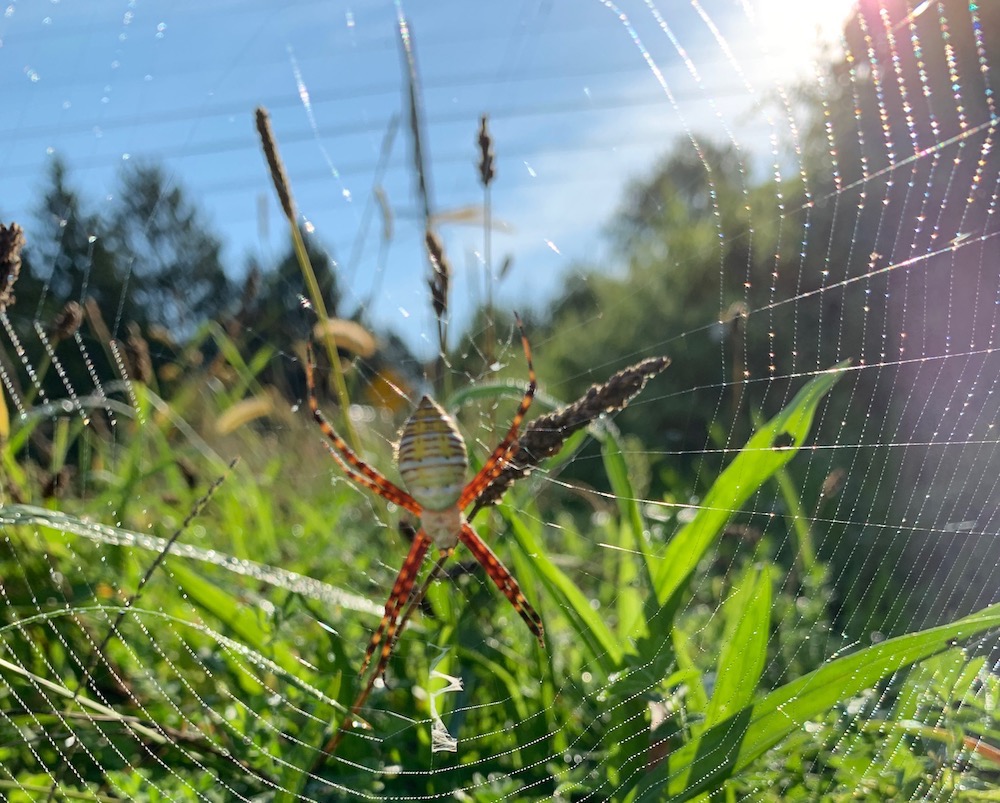
Recently I read an email from Massive Science Weekend Read, an online journal, with the subject line: “A price on Earth’s head.” The opening paragraph about an article on biodiversity loss said, “By now it's obvious that appealing to people's feelings about nature doesn't work as well as it should.” The article said that monetizing nature could “incentivize environmentalism.” I wanted to say, whatever it takes, but I was depressed by the article, maybe because I didn’t want to think about my own species having lost all empathy. Plus, I was a writer and I didn’t know any other way to reach readers but through emotions.
When guys on the crew ask why it’s important to save a turtle, or a rattlesnake, I say, look at the global ecosystem like a spider’s web. Eliminate a species of frog in the rainforest, who cares? A tiny fish in Colorado, how does that matter to me? Each extinction is a broken strand that weakens the web, I tell them. Sometimes, the guys get it. They nod, and say, “That makes sense.” But I’m not really telling them the whole story, because I’m afraid they’ll reject my appeal to their emotions. I’m afraid to simply say that I can’t live in a world without frogs, turtles, snakes, lizards—without wildlife. None of us can live in such a world. I’m not just talking about clean air and water, but emotional wellbeing.
In her book, Animals in Translation, Dr. Temple Grandin says emotions are crucial, “Because people and animals use their emotions to predict the future and make decisions about what to do… A healthy animal is the exact opposite of an emotional blank, and he makes sound, emotion-based decisions all the time. He has to; otherwise he’d be dead.”
• • •
In July, this summer of the pandemic, I was monitoring a construction site for a luxury resort, complete with lighted bridges and walkways crossing over two ponds. The wetland behind the ponds was drained to make a parking lot, destroying and displacing animals. Walking the access road one day, I picked up a piece of turtle shell, and recognized it as being from a female painted turtle who’d been run over two days before, by trucks operating after I’d left the site at the end of the day. In that brief time a raccoon or skunk had cleaned out her carcass and pieces of shell were all that remained. Turning the piece over I saw part of her spine, which was attached to the shell, and remnants of her ribs attached to that. But I couldn’t stand there and cry, so I got my matter-of-fact voice to say, there’s nothing you can do, get on with the job, all the while feeling grief in my stomach.
Not five minutes later, I came upon a garter snake I recognized, coiled beside the doorstep of a small building under construction. He had a head wound that must’ve happened during the removal of rocks in the new parking lot. The wound had closed and seemed to be healing, so I had let him go in the woods, a safe distance from the construction site. A few days later I found him again and I carried him farther, up a hill, to a place where I’d seen another garter snake. Now, here he was again, as though lost, and I wondered if he had given up on surviving.
For the third time, I scooped him up. He was not listless, though; he flowed through my hands, wove between my fingers, flicking his tongue in and out as snakes do to find out about their circumstances. Soon, he coiled in my hands, hiding there against my stomach and the knot of my grief loosened—this snake lived, and maybe I could help him. I carried the snake to my truck, got in, and with one hand on the steering wheel I drove him off the site and up the road to a remote area where many garter snakes lived by the rocks at the edge of woods and field.
On the Blanding’s turtles’ site, I came to the busy road that cuts through the right-of-way and I turned around and started walking back. The bucket trucks were set up at the first pool, and the guys were working on the power pole and lines. Approaching the fourth pool, I could see the heavy mat covering more than half of it, but then, I also saw a pair of round eyes and a nose above the water’s surface—a big frog. He had made the swirl in the water that I thought was a turtle. Relief spread through me, and hope, because there he was, saying, I’m still here!
He dove under when I came close and I stood looking at the swirl in the water. I saw things a little better, less dire—not that the world was any less in trouble, but the mess of me felt manageable, at least in that moment. While the frog lived, I could still do my best to protect him any way I could.
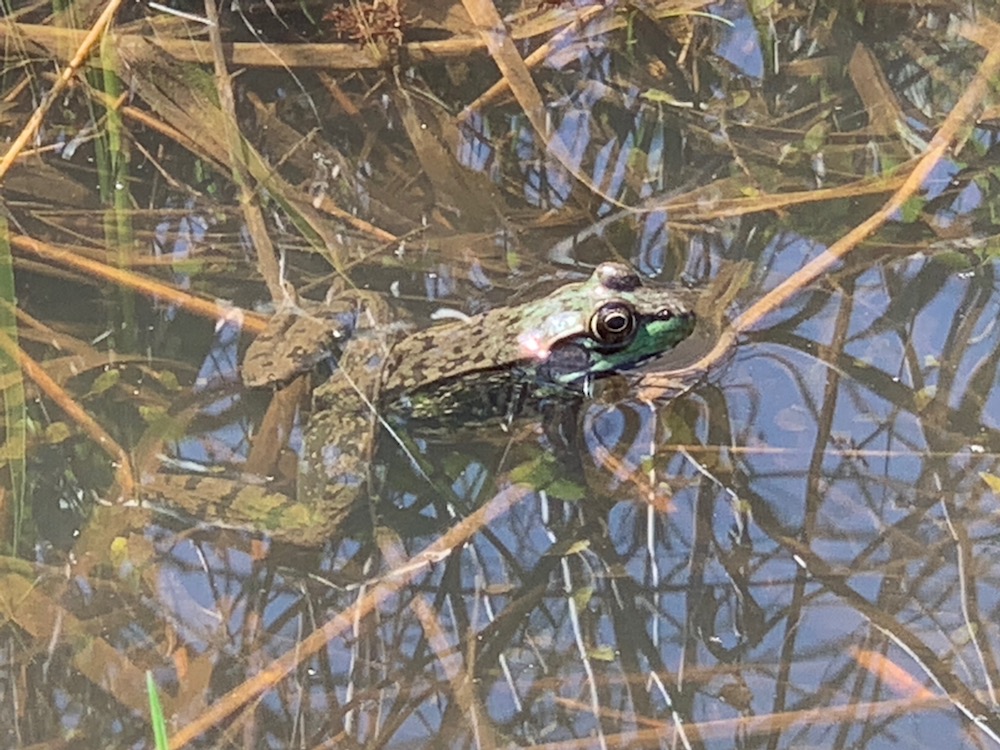
Publishing Information
- Information about Blanding’s turtles on the official website of New York State’s Department of Environmental Conservation.
- “Biosphere Reserve to Transshipment Port: Travesty for Jamaica’s Goat Island” by Tandora D. Grant, IRCF Journal, Reptiles and Amphibians, June, 2014.
- “Back from virtual extinction” by UNDP Jamaica, December 20, 2018.
- “Yes, you can put a price on nature. Doing so could stop environmental destruction” by Vanessa Vietes, Massive Science, July 17, 2020.
- Animals in Translation by Temple Grandin (Bloomsbury, 2005).
Art Information
- All photos © Wendy Townsend; used by permission.
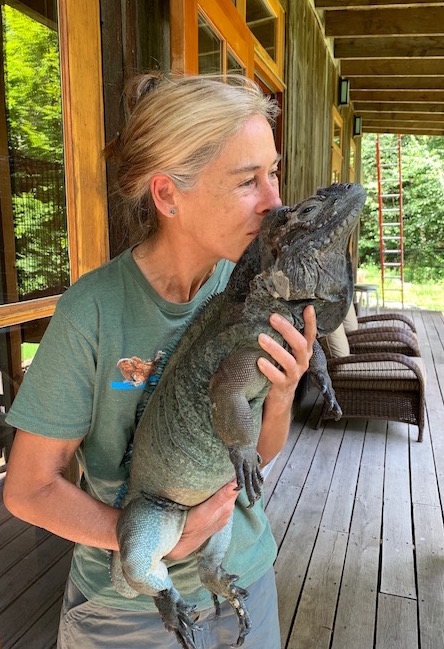 Wendy Townsend is a graduate of the Vermont College MFA Program in Writing for Children and Young Adults. She is a lifelong lover of animals and has shared her home with many large lizards since she was eight years old. In 1993, she coauthored a biology and husbandry book about iguanas, and has written many articles about these lizards.
Wendy Townsend is a graduate of the Vermont College MFA Program in Writing for Children and Young Adults. She is a lifelong lover of animals and has shared her home with many large lizards since she was eight years old. In 1993, she coauthored a biology and husbandry book about iguanas, and has written many articles about these lizards.
The Sundown Rule was one of Kirkus’ 2011 Best Books for Children and her third novel, Blue Iguana, was short-listed for the 2015 Green Earth Book Award. In 2019, Townsend traveled to Jamaica to write about the Jamaican iguana. She is at work on a memoir called Half Lizard.
Brief excerpts of this essay appear in a piece titled, The Frog, included in Read 650's presentation during Carnegie Hall's Voices of Hope festival.
